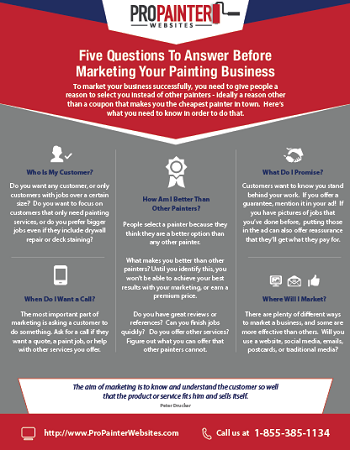Check Out The Role Of Seasonal Factors In The Success Of Industrial Exterior Paint And Uncover The Best Times To Secure Enduring Results For Your Task
Check Out The Role Of Seasonal Factors In The Success Of Industrial Exterior Paint And Uncover The Best Times To Secure Enduring Results For Your Task
Blog Article
Web Content Created By-Korsholm Urquhart
When you're preparing a business exterior paint task, seasonal factors can make or break your results. You'll want to think about just how temperature and humidity effect paint application and drying out times. Picking painting contractors can guarantee your paint sticks effectively and lasts longer. But which periods are genuinely the very best for this sort of work? Allow's explore the key elements that can impact your project's success.
The Impact of Temperature on Paint Application
When you're planning an industrial exterior paint project, the temperature can dramatically affect how well the paint adheres and dries.
Preferably, you intend to paint when temperatures vary in between 50 ° F and 85 ° F. If it's as well cold, the paint may not heal correctly, causing issues like peeling off or fracturing.
On the other side, if it's too warm, the paint can dry out also rapidly, preventing appropriate adhesion and resulting in an irregular surface.
You ought to additionally think about the moment of day; morning or late afternoon provides cooler temperature levels, which can be extra desirable.
Constantly check the manufacturer's recommendations for the particular paint you're using, as they usually offer assistance on the excellent temperature variety for ideal outcomes.
Moisture and Its Impact on Drying Times
Temperature isn't the only ecological aspect that affects your business outside painting job; humidity plays a substantial duty as well. High humidity levels can decrease drying out times drastically, affecting the total top quality of your paint work.
When the air is filled with wetness, the paint takes longer to treat, which can lead to issues like inadequate attachment and a greater threat of mold development. If you're painting on a specifically damp day, be gotten ready for extended wait times between coats.
It's essential to monitor regional weather conditions and plan accordingly. Ideally, go for moisture levels in between 40% and 70% for optimum drying.
Maintaining these factors in mind guarantees your job remains on track and delivers a lasting coating.
Best Seasons for Commercial Outside Paint Projects
What's the most effective time of year for your commercial exterior paint projects?
paint houses and very early autumn are commonly your best choices. Throughout these seasons, temperatures are moderate, and moisture levels are usually reduced, developing excellent conditions for paint application and drying.
Prevent summer's intense heat, which can cause paint to completely dry as well swiftly, causing bad bond and surface. Likewise, commercial painting company minnesota can hinder appropriate drying and healing, risking the longevity of your paint work.
Aim for days with temperature levels between 50 ° F and 85 ° F for optimal outcomes. Remember to examine the local weather report for rainfall, as wet conditions can destroy your task.
Preparation around these variables guarantees your paint task runs efficiently and lasts much longer.
Conclusion
Finally, preparing your business external paint tasks around seasonal factors to consider can make a considerable difference in the end result. By scheduling work during the excellent temperature levels and moisture levels, you'll make certain much better attachment and drying times. Bear in mind to watch on regional weather report and pick the right time of year-- spring and very early autumn are your best options. Taking these steps will certainly aid you accomplish a durable and professional finish that lasts.
